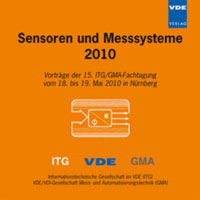Detection of droplets on non-piezoelectric substrates via mode conversion of Lamb waves
Konferenz: Sensoren und Messsysteme 2010 - 15. ITG/GMA-Fachtagung
18.05.2010 - 19.05.2010 in Nürnberg
Tagungsband: Sensoren und Messsysteme 2010
Seiten: 8Sprache: EnglischTyp: PDF
Persönliche VDE-Mitglieder erhalten auf diesen Artikel 10% Rabatt
Autoren:
Schmitt, Martin; Schmidt, Katrin; Tietze, Sabrina; Lindner, Gerhard (Institute of Sensor and Actuator Technology, Coburg University of Applied Sciences, Coburg, Germany)
Inhalt:
Surface acoustic wave (SAW) devices allow the detection of droplets on a solid surface via the mode conversion effect of acoustic waves at the solid-liquid interface. Standard SAW Sensor components made of piezoelectric substrates, how-ever, have to be attached to the region of interest and their sensitive area is restricted to their extension. In case of droplets formed of conductive liquids, the interdigital electrodes of such sensors have to be protected against contact with the liquid. In our recent work, the propulsion of droplets on extended non-piezoelectric substrates via mode conversion of Lamb waves was investigated. In this set-up, piezoelectric interdigital transducers (IDT) were attached on a non-piezoelectric plate, e.g. a glass plate, in such a way, that the IDT and the droplets were on opposite sides. As long as the amplitude of the excited Lamb wave was below a specific level, no propulsion of the droplet occurred, but a large decrease in the amplitude of the receiver signal could be obtained by a second IDT, forming a delay line with the first IDT. This approach to droplet detection has been investigated in more detail with respect to the influence of position, size and number of droplets, the type of the liquid in the droplet and the material of the substrate and, correspondingly, the wetting angle. The results of these investigations will be presented in this article accompanied by numerical calculations of the influence of a liquid deposition layer on the mode conversion effect. This concept allows the realization of droplet sensors, which use existing structures as extended sensitive surfaces. Applications of this concept could be e.g. the activation of wipers on windscreens or the detection of leakages of liquid filled tubes.


